Ivakhnikovsky treasure trove
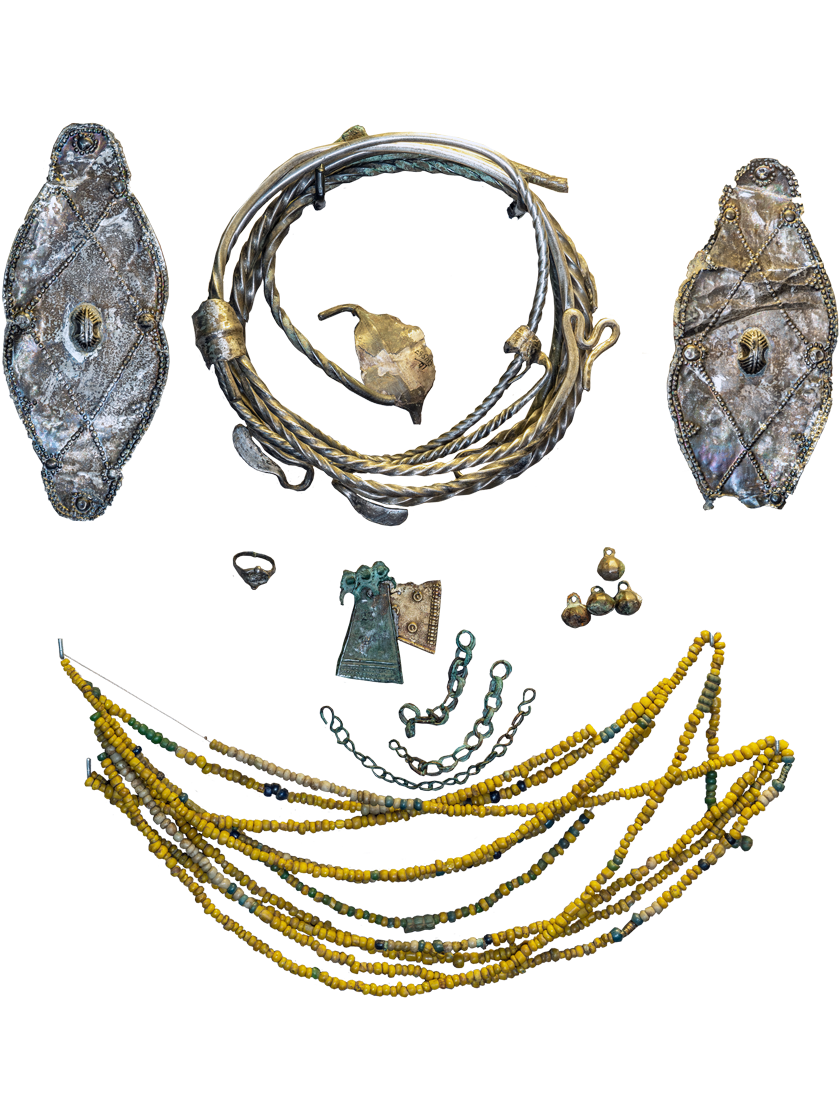
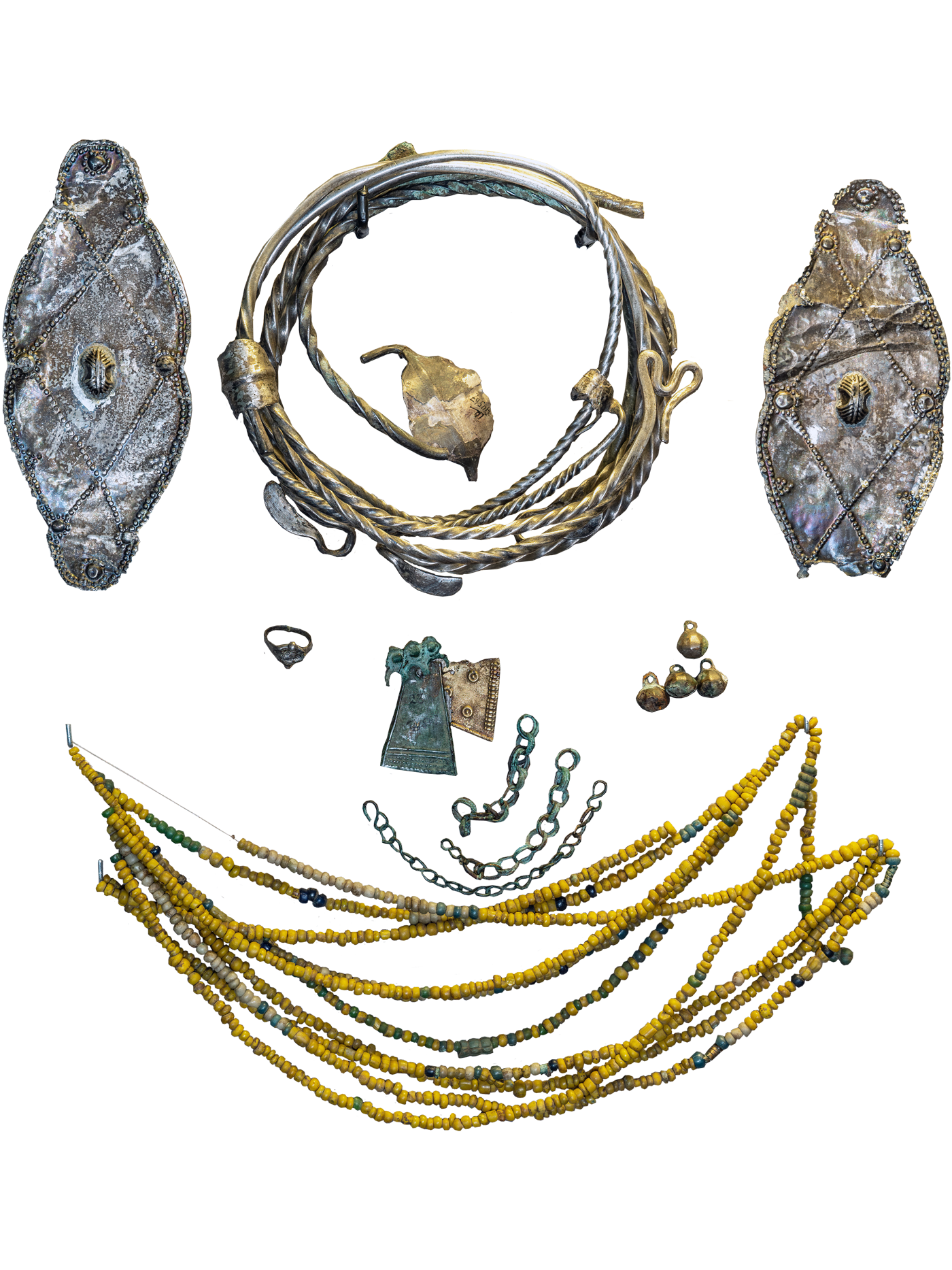
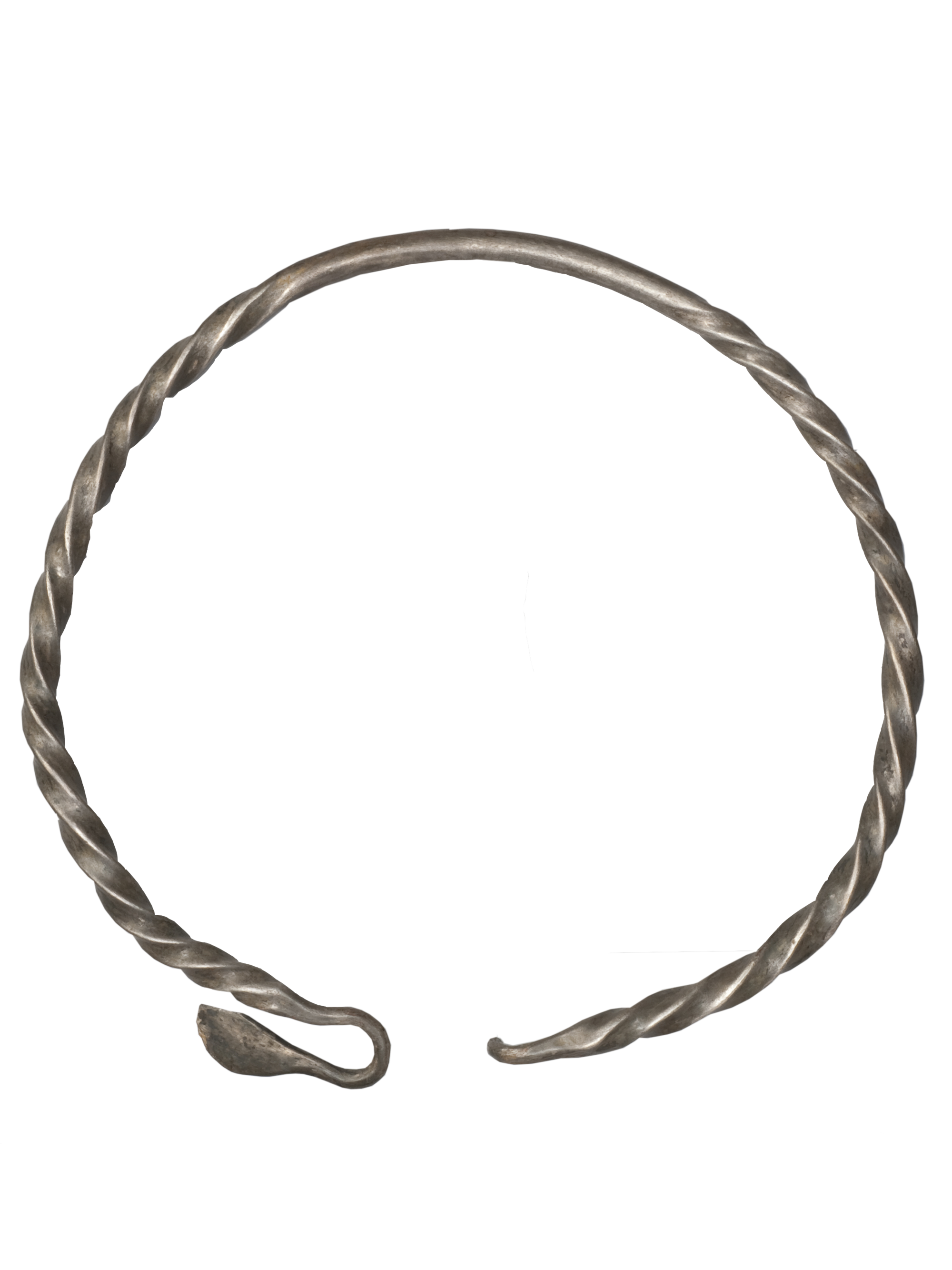
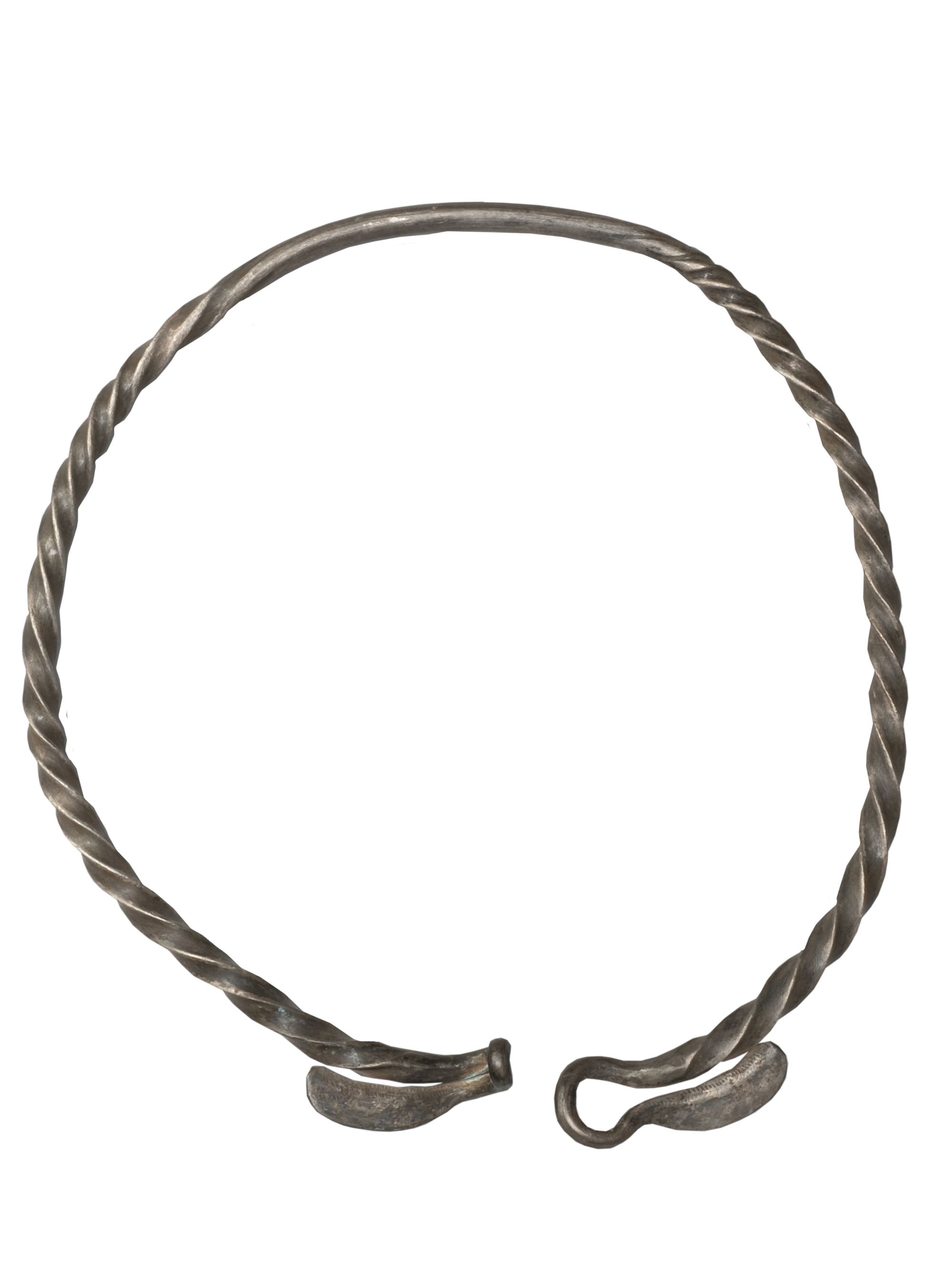
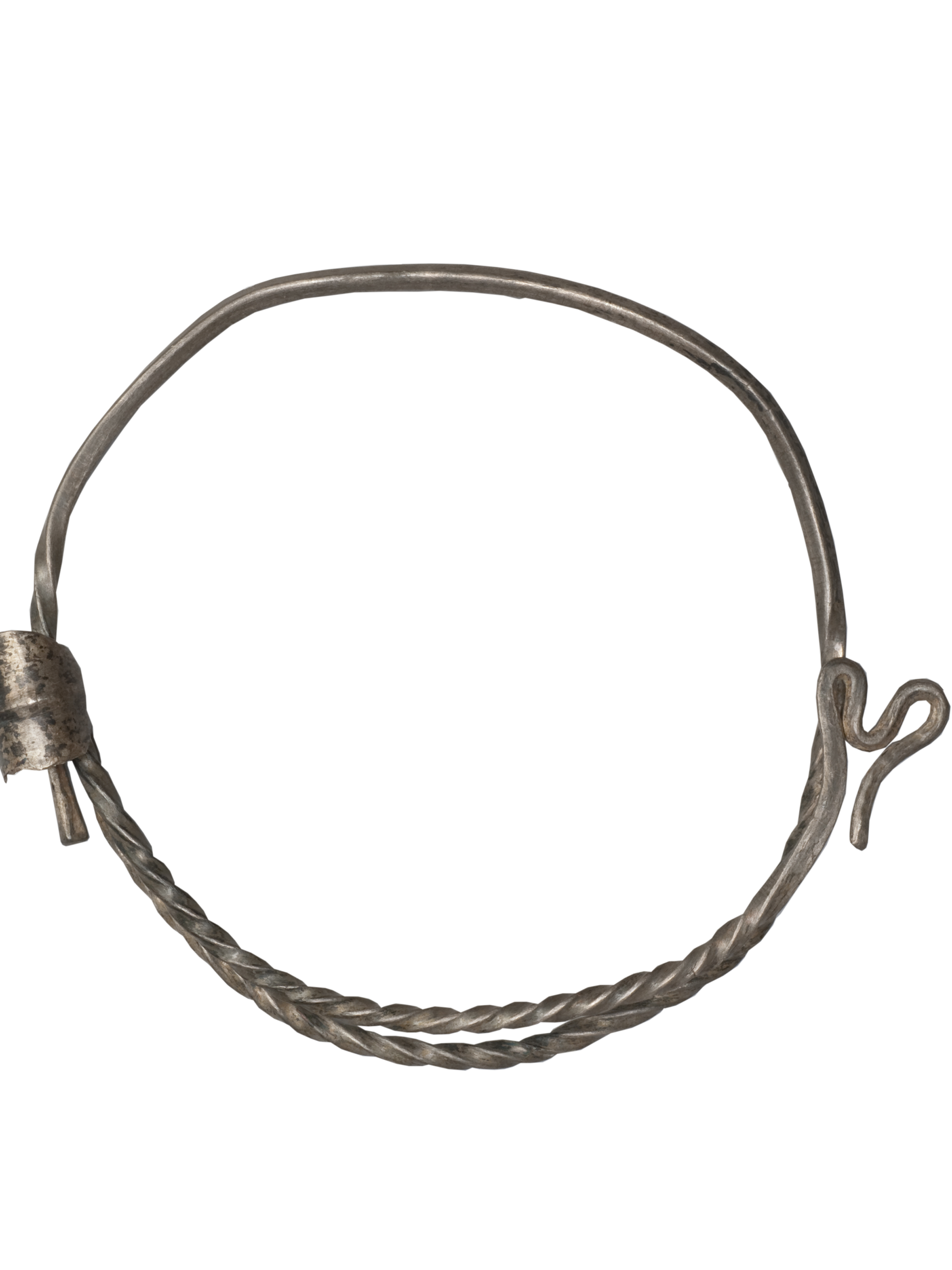
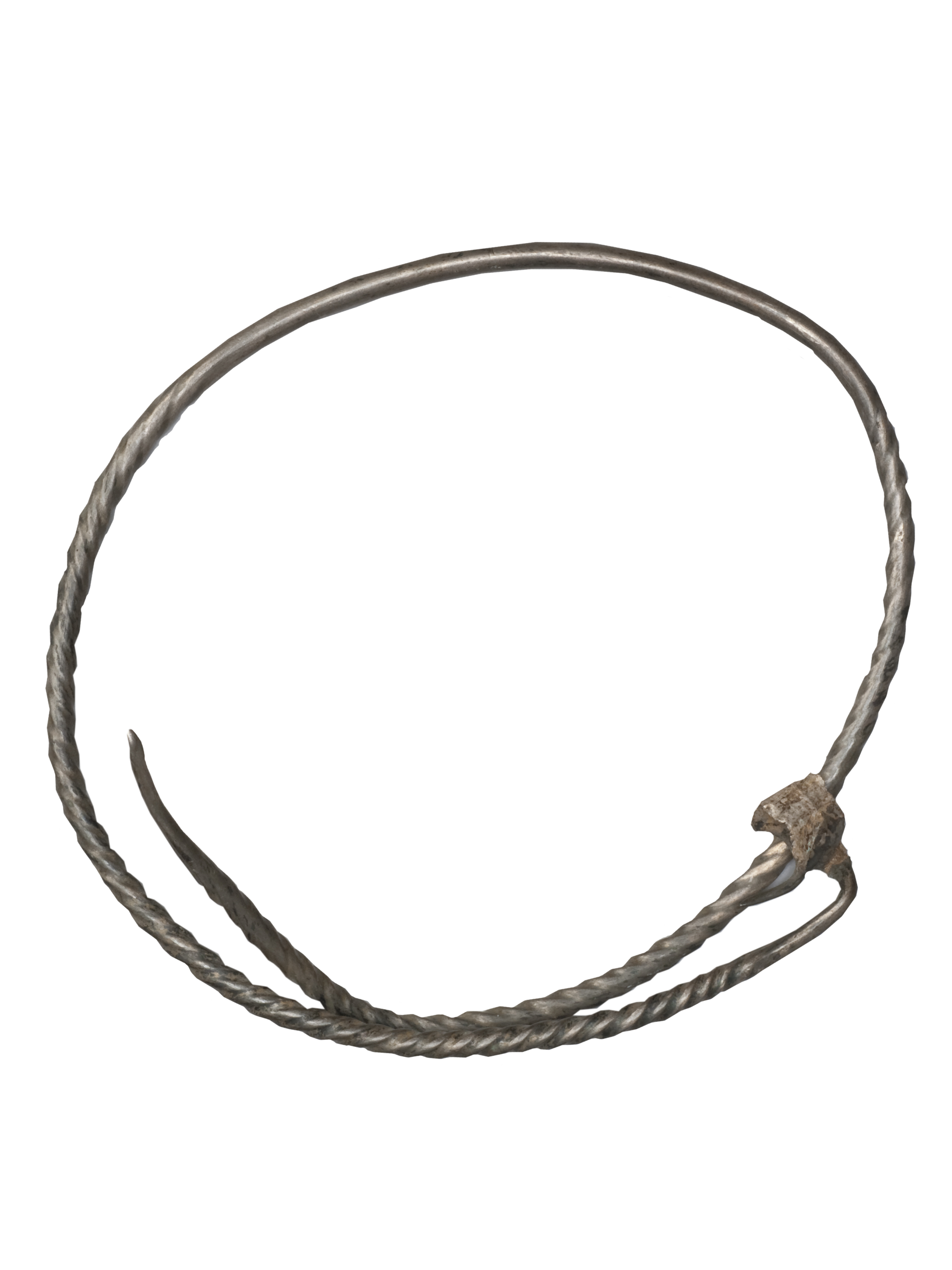
Ivakhnikovsky Treasure trove was discovered during ploughing in May of 1905.
Treasure included a full set of women's Slavic adornments: 6 neck torcs made of round twisted silver rods with locks at the ends, 2 silver ornamented plate fibulae diamond-shaped clasps, 2 silver rings with oval shields, one of which contained a black stone insert, 2 copper trapezoid pendants, 4 copper bells and 976 glass beads: blue, green, yellow as well as ribbed and spiral beads.
Among items of the Treasure were both archaic forms of jewelry outliving their time (plate fibulae) and new forms that would exist for the next few centuries (twisted torcs). Final formation of Slavic tribal unions: large territorial and political entities, which are referred to in the “Tale of bygone years” (a written source on the history of Ancient Russ’) as “princedoms”: "their family had their princedom of the Polians, and the Drevlians had princedom of their own, and the Dregovichi of their own, and the Slavs in Novgorod of their own and yet another on the Polota river, where lived the Polochians".





